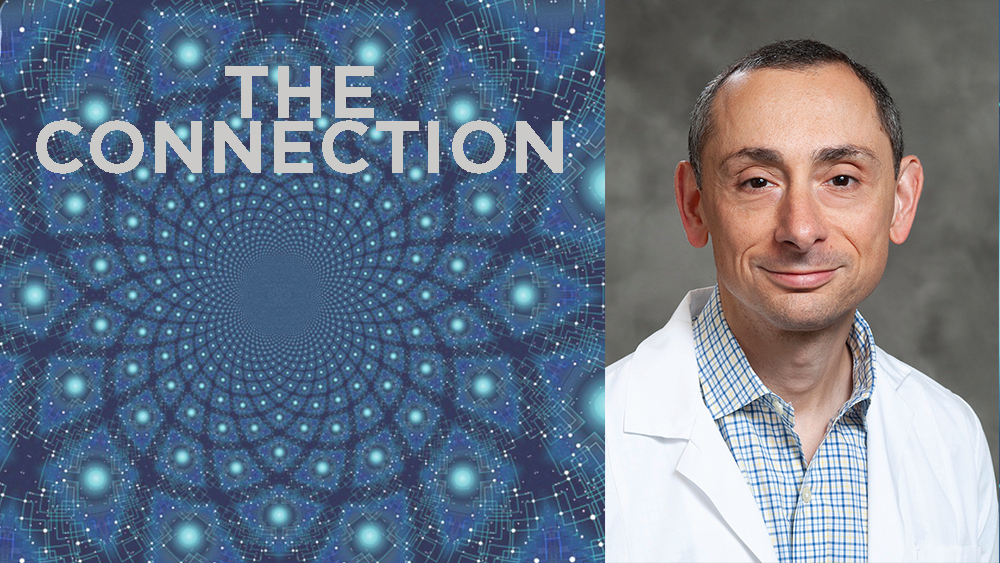
Sometimes the most dangerous element of disease is not its immediate manifestations, but secondary dangers that follow. For patients with diabetes, the most instantaneous issue is one of elevated blood sugar that can over time cause direct damage. The leading cause of death or serious disability for these patients, however, is cardiovascular and heart complications. For Dr. Mikhail Kosiborod, Cardiologist and Vice President for Research at Saint Luke’s Health System, the goal is to identify the causes of elevated cardiovascular risk in patients with diabetes and mitigate or eliminate those risks.
When Kosiborod moved to Kansas City in 2005, he had big plans. “I’m not a basic scientist, so I really concentrated on two key aspects; first, to describe the disease process itself [for patients with diabetes] better and identify patient characteristics and treatments that are related to favorable or unfavorable patient outcomes,” Kosiborod said. “Second, was building a clinical trial program, trying to identify interventions that will ultimately have a dual purpose of improving blood sugar but also addressing the cardiovascular issues.”
Both type 1 and 2 diabetes are diseases characterized by elevated blood sugar. In years past, the primary metric of evaluating treatments for diabetes centered on their ability to lower blood glucose. However, that changed in 2008, when the FDA required that all new glucose-lowering medications undergo rigorous testing in cardiovascular outcome trials to test their effects on heart complications. As a result, Kosiborod became an expert in a new field of “cardiometabolic medicine” which focused on improving outcomes for patients with diabetes who had an amplified risk of cardiovascular disease, heart failure, and stroke. Kosiborod was one of the investigators who proposed to test one of the novel classes of glucose-lowering medications as a potential treatment for heart failure in 2014. Within six years, this hypothesis was not only proven to be correct but is revolutionizing the treatment of heart failure worldwide.
Kosiborod was always interested in complications of diabetes, but it became personal when his fiancé, now wife, was diagnosed with type 1 diabetes while he was in medical school. Shortly after, his father was diagnosed with type 2 diabetes. What was perhaps a research curiosity turned into a personal pursuit with first-hand impact. “It was a traumatic moment, but my wife and I have been married for 25 years, and we’ve been through all the medical innovation and care advances in type 1 diabetes together,” Kosiborod said. “It was a tremendous learning experience for me, and it undoubtedly influenced my career as a clinician investigator.”
Born in Siberia within the Soviet Union in the early 1970s, Kosiborod came from a family of medical professionals. His father was a physician by trade but spent his career in environmental science studying the effects of coal burning byproducts on coal miners’ lung disease. His family moved to the U.S. in 1990 and spoke little English when they settled in New York City. “I had great role models in medical school and during training – first in New York City, then New Haven, Connecticut, and after I moved to Kansas City 15 years ago, I had a dream of building a research program dedicated to diabetes and heart disease,” Kosiborod said.
The program Kosiborod assembled in Kansas City has spanned beyond heart disease and is currently involved in numerous studies looking at various types of treatments for diabetes-related cardiovascular disease, heart failure, chronic kidney disease, and other diabetes complications. These studies have allowed him and his team to build a large amount of data that uncovered a troubling fact. “Only a fraction of patients that could benefit from treatments that have been proven to lower the risk of heart complications were receiving these,” Kosiborod said. “We can do the best clinical trials and find many innovative treatments – but if the patients are not benefiting from these therapies, then we haven’t really made progress. That’s the big why for building the Cardiometabolic Center of Excellence to show what needs to be done to improve the quality of care and outcomes, and then we can evaluate the data to come up with a better way to implement advances in clinical practice.” Kosiborod and the team at Saint Luke’s have since launched a national organization, Cardiometabolic Center Alliance, through which they seek to help other healthcare organizations around the country build their own centers of excellence, with the ultimate goal of improving the quality of care for patients with diabetes and cardiovascular disease.
Against the backdrop of the COVID-19 pandemic and with diabetes affecting more than 10% of Americans, Kosiborod is interested in the potential applications of this research in treating patients affected by the virus. “COVID-19 is not just a respiratory disease; it’s also a metabolic disease and a cardiovascular disease, so we are trying to test some of the treatments that we’ve used over the past few years in our trials and see if we can apply some of these therapies to reduce complications and deaths and improve the speed of clinical recovery from COVID-19,” Kosiborod said.
The most satisfying part of research for Kosiborod and his team at Saint Luke’s is pursuing and discovering new approaches to treating disease and contributing to improving survival and quality of life. “These are patients that you will never meet in your life, but just knowing that they have benefitted because of what you have done, I think that is the biggest reward anyone could wish for,” Kosiborod said.